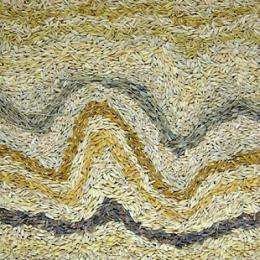Getting to the bottom of rice

Rice is the world's most important food crop. Understanding its valuable genetic diversity and using it to breed new rice varieties will provide the foundation for improving rice production into the future and to secure global food supplies.
Recently published in the Proceedings of the National Academy of Sciences, an international research team of researchers scrutinized the genomes of twenty different types of genetically diverse rice used in international breeding with a wide range of different characteristics.
"We searched for snippets of DNA that distinguish each type of rice," says Dr. Ken McNally from the International Rice Research Institute (IRRI). "If the rice types share a favourable trait, like drought tolerance, high yield, or even desirable cooking quality characteristics, they are likely to also share the same DNA variation responsible for that trait."
Rice contains tens of thousands of genes, so finding a successful way to hunt through them all is a major breakthrough. IRRI maintains the International Rice Gene Bank containing over 109,000 types of rice, yet relatively few have been used in breeding programs.
Director General of IRRI, Dr. Robert Zeigler, says "If breeders know more about the genetic makeup of rice, they can use it more effectively. As we face more erratic changes in climate, we will increasingly rely on using the untapped diversity of rice to develop new and improved rice varieties."
This study represents a significant international collaboration across the globe, including researchers from countries in Asia, North America, and Europe. The work attracted scientists interested in both basic and applied science, from evolution, crop domestication, to practical breeding.
Dr. Jan Leach, University Distinguished Professor at Colorado State University, a co-author on the study, indicates that "the comprehensive SNP information is enabling the exploration of rice diversity not only for understanding how genes function in a growing and developing plant, but also for improving important rice traits related to disease resistance, drought tolerance, increased productivity, and human health benefits." Detlef Weigel, Director of the Max Planck Institute for Molecular Biology and collaborator on the project, agrees: "This work sets the stage for the next phase of unlocking the treasure trove of genetic diversity available at IRRI and other centres for rice breeding."
More information: Kenneth L. McNally, Genomewide SNP variation reveals relationships among landraces and modern varieties of rice, PNAS, Published online before print July 13, 2009, doi: 10.1073/pnas.0900992106
Source: Max-Planck-Gesellschaft (news : web)

















